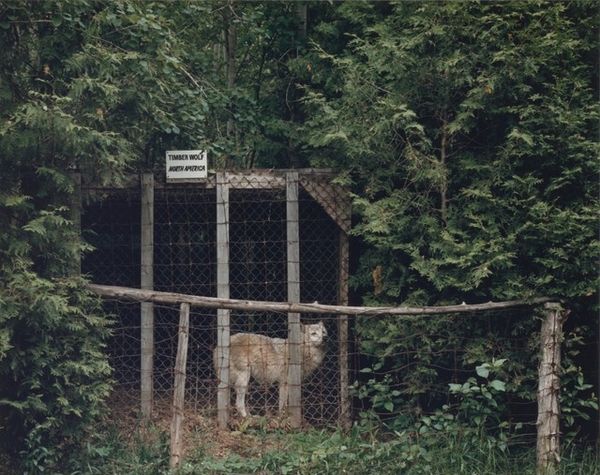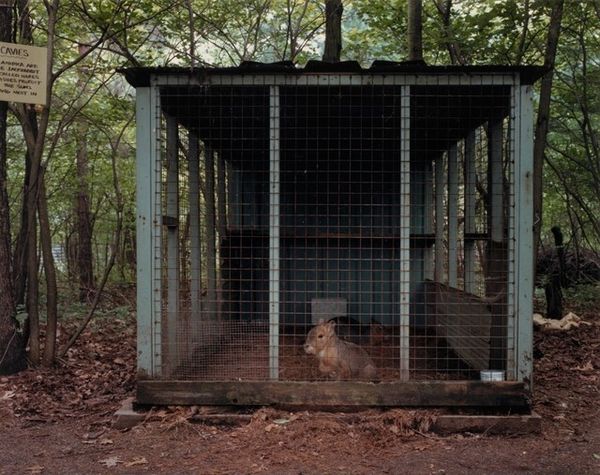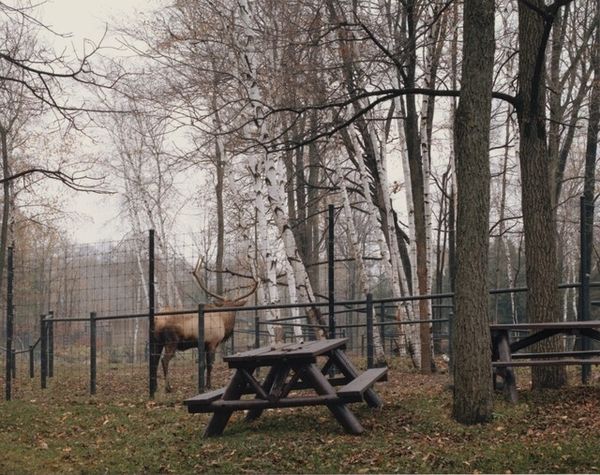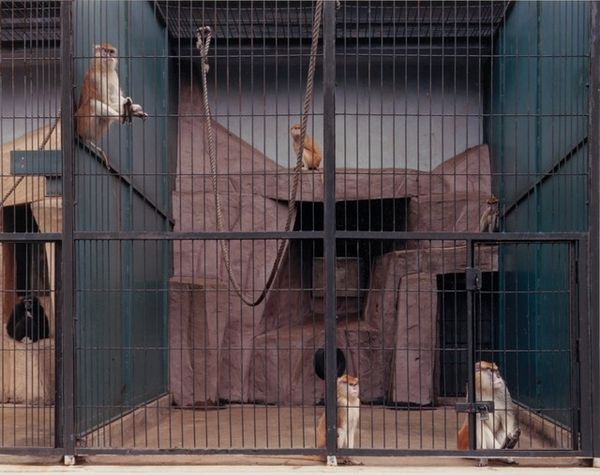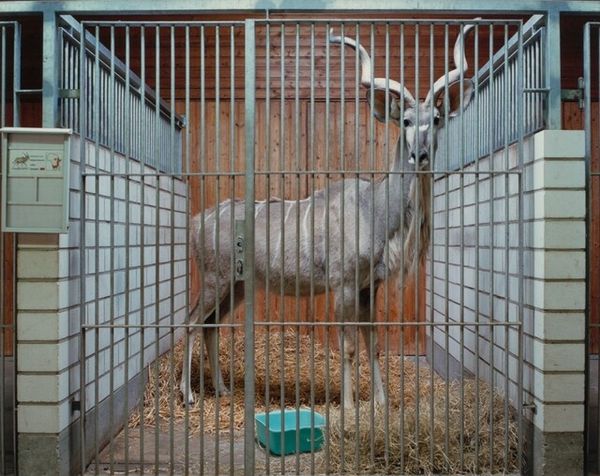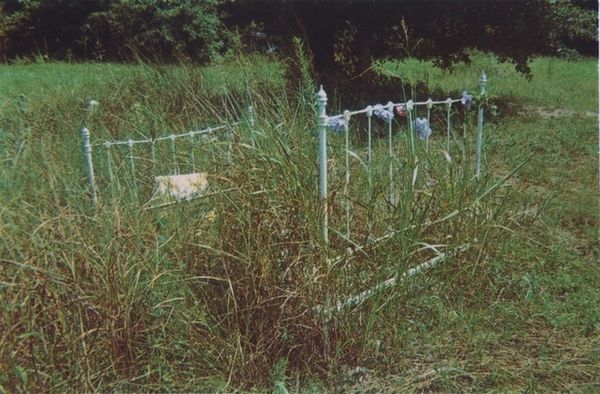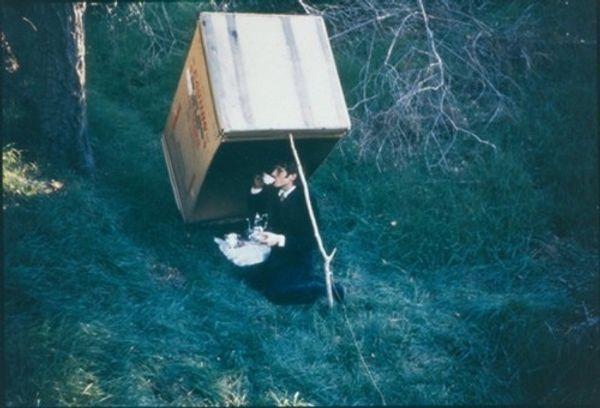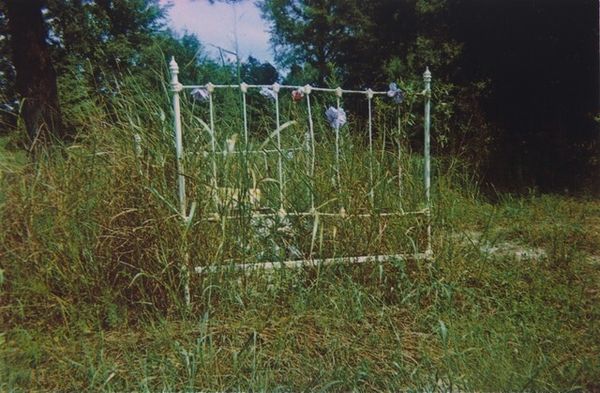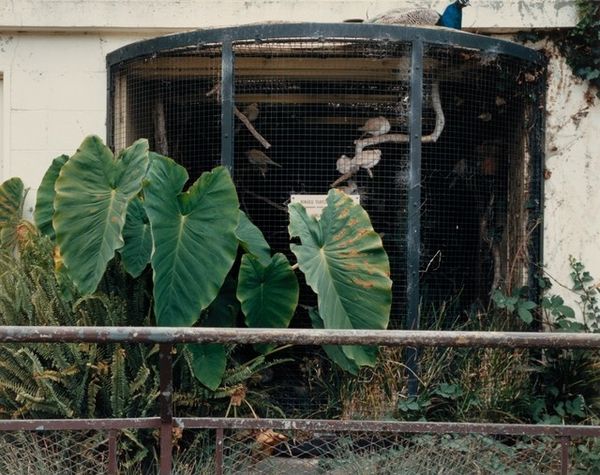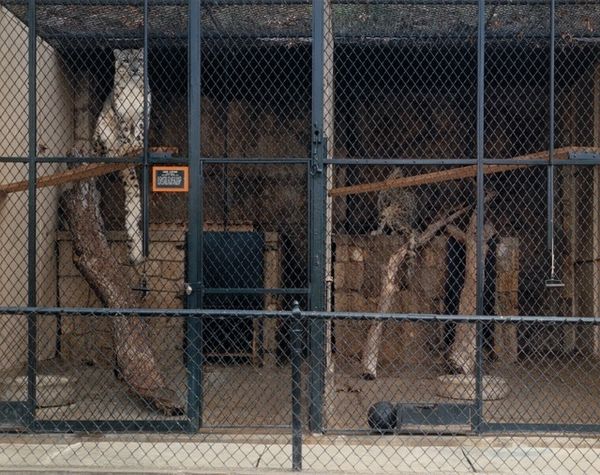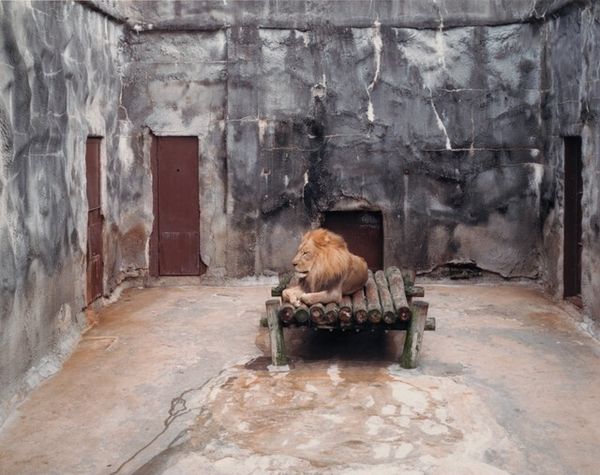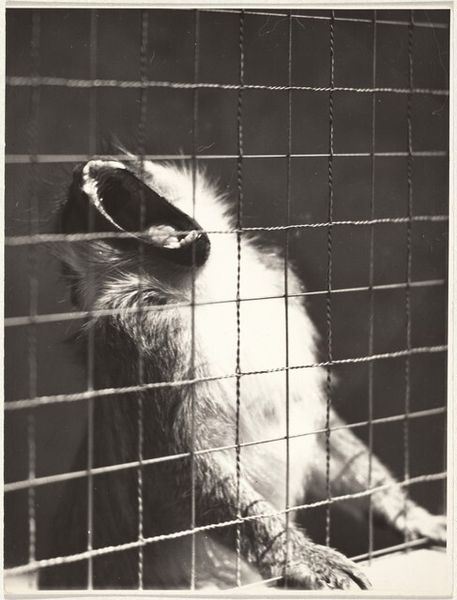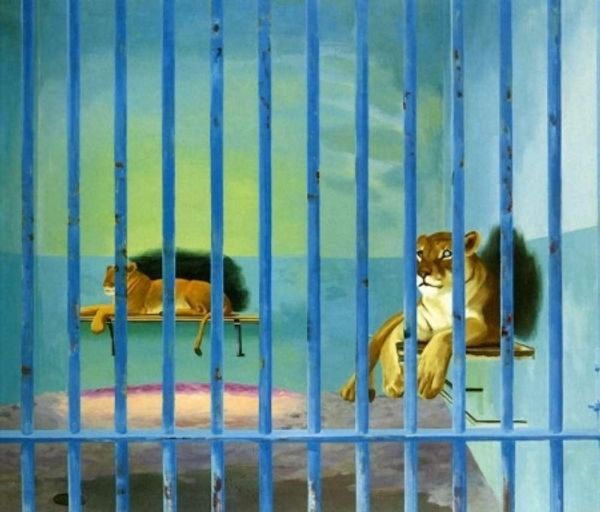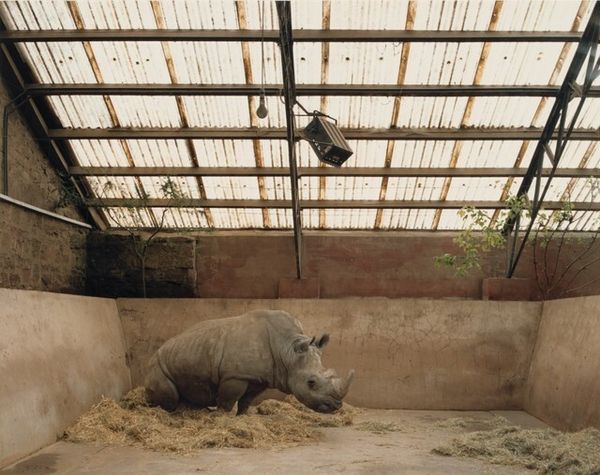
Patas Monkey, Bassett Wild Animal Farm, Cape Cod Possibly 1986 - 1988
0:00
0:00
#
wildlife photography
#
nature photography
#
nature
#
ecological
#
nature friendly
#
nature environment
#
animal photography
#
natural environment
#
nature closeup
#
urban garden
Dimensions: image/sheet: 16 × 20 cm (6 5/16 × 7 7/8 in.) mount: 20.32 × 25.4 cm (8 × 10 in.)
Copyright: National Gallery of Art: CC0 1.0
Curator: Volker Seding's photograph, titled "Patas Monkey, Bassett Wild Animal Farm, Cape Cod," believed to be captured between 1986 and 1988, presents a fascinating, if somewhat melancholic, scene. Editor: My immediate response is…disquiet. There’s something deeply unsettling about the composition, a monkey perched forlornly in what appears to be a rusted cage within a caged area, overlaid against a backdrop of institutional greenery. It speaks of layers of containment, wouldn't you agree? Curator: Absolutely. And it begs the question: What are we seeing? It’s vital to remember the historical context: small zoos and animal farms like Bassett were fairly common, but often operated with limited resources and, arguably, limited ethical considerations for the animals in their care. Editor: It certainly brings forth a dialogue on power structures. This image visualizes the captivity of non-human animals for human entertainment and, potentially, profit. Seding’s composition directs our gaze to the undeniable reality of control, but it doesn't appear that he's explicitly passing judgment, correct? Curator: I concur. The photo offers us a mirror reflecting a certain era. Seding’s photograph is more than a portrait of a monkey; it's a snapshot of our evolving awareness of animal welfare. He doesn’t use flashy artifice. Editor: Indeed. This raw visual document really resonates. It almost compels us to analyze our assumptions about dominion and interrogate systems that enable such sights. As an image, it holds significant potential for galvanizing discussions about environmentalism and conservation, urging viewers to think about the impact we wield. Curator: Precisely. It functions as an archive, recording a chapter in human-animal relations that necessitates perpetual questioning. Its impact will likely continue to expand in the cultural imagination. Editor: Ultimately, I believe this image serves as a visual indictment of anthropocentric worldviews. It is so incredibly important. Curator: And a necessary contribution to our critical consciousness about our shared world. Thank you.
Comments
No comments
Be the first to comment and join the conversation on the ultimate creative platform.
